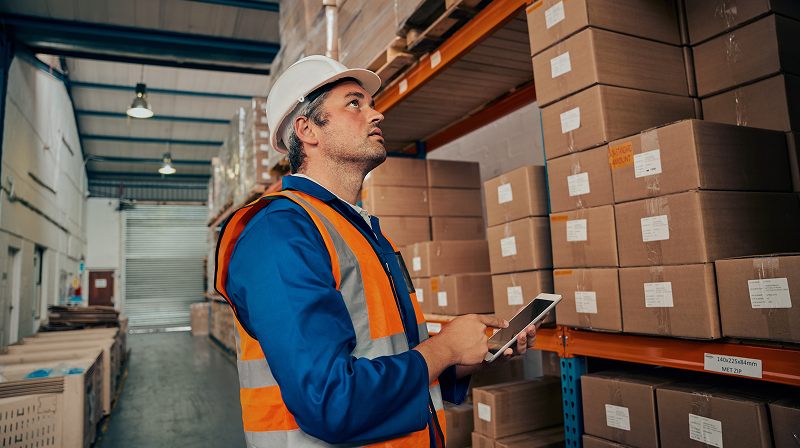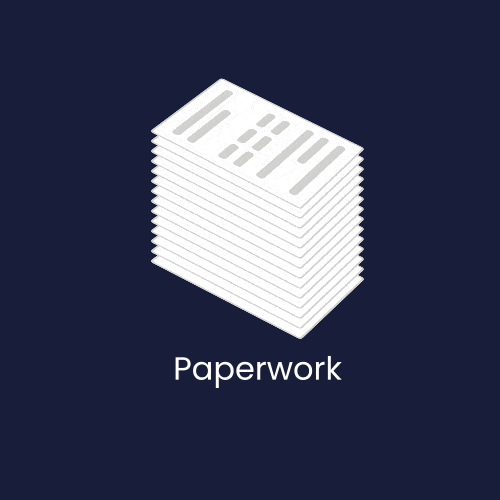Reverse logistics is now crucial for companies that want to be efficient and sustainable. This is especially true in today’s fast-paced logistics and supply chain world. Unlike traditional forward logistics, which moves goods from manufacturers to consumers, reverse logistics manages returns, repairs, recycling, and disposal of products.
Industries like e-commerce, retail, and manufacturing depend on reverse logistics management. This helps them improve returns, save time, and boost customer satisfaction. With reverse logistics software, businesses can automate returns. They can also improve tracking and make last-mile logistics more cost-efficient.
In this blog, we will look at reverse logistics. We will cover its process, types, and benefits. We will also discuss how it applies to different industries. You will see real-world examples and learn how technology is changing this area.
What is Reverse Logistics?
Reverse logistics is the process of moving products from the consumer back to the manufacturer or retailer. This can be for returns, repairs, resale, or disposal. It plays an important role in supply chain management. It helps businesses manage product recalls, customer returns, recycling, and product end-of-life efficiently.
Reverse Logistics Process: How Does It Work?
The reverse logistics process generally involves the following key steps:
Product Returns
-Customers return defective, damaged, or unwanted goods.Inspection & Sorting
– The team checks the returned items for quality and categorizes them for resale, refurbishment, or disposal.
Refurbishing & remanufacturing
– This Involve repairing, repackaging, and reselling usable products in the market.Recycling & Disposal
– Workers break down end-of-life products into raw materials for reuse- Resellers sell returned items in good condition at discounted prices in secondary markets.
Asset Recovery & Reuse
– Businesses recover valuable assets such as packaging materials, pallets, or containers for reuse.
Many companies use reverse logistics software to make this process easier. This helps them save money, be more transparent, and speed up turnaround times.
5 Types of Reverse Logistics Optimizing Returns for Efficiency
Reverse logistics is crucial in today’s supply chains. It helps businesses handle returns, fix products, and support sustainability. Based on business operations, reverse logistics can be classified into several key categories:
1. Returns Management
Returns management involves processing customer returns, exchanges, and refunds efficiently. This is particularly important in e-commerce and retail, where high-volume returns are common. A well-structured returns process enhances customer satisfaction and minimizes losses.
2. Remanufacturing & Refurbishment
Many businesses repair, repackage, and resell used or defective products to extend their lifecycle. Apple’s iPhone trade-in program fixes old devices and sells them again. This helps reduce electronic waste and gives consumers cheaper choices.
3. Recycling & Waste Management
Sustainability is a key focus in reverse logistics, with companies recycling materials from returned goods to minimize environmental impact. Fashion brands, for example, recycle unsold clothing to prevent landfill waste, contributing to a circular economy.
4. Asset Recovery & Reuse
Businesses optimize costs by recovering and reusing packaging materials, IT assets, pallets, and containers. Automotive manufacturers often reuse parts from old vehicles, reducing material costs and waste.
5. Secondary Market Sales
Returned items that are still functional are often resold at discounted prices through outlet stores or online marketplaces. Platforms like Amazon Warehouse Deals offer customers affordable options while helping businesses recover losses from returns.
Reverse logistics strategies vary across industries such as e-commerce, retail, and manufacturing. By implementing tailored solutions, businesses can streamline returns, reduce costs, and contribute to a more sustainable supply chain.
5 Key Benefits of Reverse Logistics for Businesses
A well-implemented reverse logistics strategy can significantly enhance operational efficiency, customer satisfaction, and sustainability. Businesses that optimize their return processes can unlock multiple benefits, including cost savings, compliance, and a stronger brand reputation.
1. Cost Savings & Revenue Recovery
Managing returns efficiently helps reduce unnecessary transportation and warehousing costs. Additionally, refurbishing and reselling returned products creates new revenue streams, allowing businesses to recover losses and maximize profitability.
2. Enhanced Customer Satisfaction & Loyalty
A seamless returns and refund process improves the overall customer experience. In e-commerce, quick and easy returns help customers buy again. This leads to better customer loyalty and brand trust.
3. Sustainability & Regulatory Compliance
Reverse logistics plays a vital role in corporate sustainability efforts. Recycling and reusing materials not only reduce environmental impact but also help businesses comply with green logistics regulations, ensuring eco-friendly operations.
4. Improved Inventory & Supply Chain Efficiency
Returned goods can be reintegrated into inventory, optimizing stock levels and reducing waste. Businesses that efficiently manage reverse logistics minimize warehousing costs by quickly identifying products suitable for resale or refurbishment.
5. Competitive Advantage & Brand Reputation
Companies that offer transparent and efficient return policies gain a competitive edge in the market. A good reverse logistics system builds customer trust. It also shows a brand’s commitment to sustainability and responsible business practices.
By leveraging reverse logistics software, businesses can enhance visibility, tracking, and process automation, ensuring last-mile logistics efficiency.
Reverse Logistics Across Different Industries
Reverse logistics is a critical component of various industries, helping businesses efficiently manage returns, reduce waste, and recover costs. Let’s explore how different sectors leverage reverse logistics to optimize their operations.
1. Reverse Logistics in E-Commerce
The e-commerce industry experiences high return rates because of customer preferences and online shopping behaviour. To handle this efficiently, retailers implement AI-driven reverse logistics software for real-time tracking and automated processing.
📌 Example: Amazon’s automated return process enables seamless product returns, ensuring quick refunds and inventory reintegration.
2. Reverse Logistics in Retail
Retail businesses manage returns from in-store purchases, handle damaged goods, and optimize seasonal inventory. Many retailers adopt resale and recycling programs to minimize waste and maximize product lifecycle.
📌 Example: Walmart’s return and refurbishment system resells or repurposes returned products, reducing losses and promoting sustainability.
3. Reverse Logistics in Manufacturing
Manufacturers focus on reusing defective parts and materials to lower costs and reduce dependency on raw material procurement. This approach supports a circular economy by refurbishing and reintroducing components into production lines.
📌 Example: Automobile manufacturers remanufacture car parts, lowering production costs while maintaining sustainability.
By tailoring reverse logistics strategies to industry-specific needs, businesses can enhance efficiency, reduce waste, and improve profitability.
How Reverse Logistics Software Enhances Efficiency
Technology-driven reverse logistics software plays a crucial role in optimizing return processes, minimizing costs, and improving overall efficiency. By automating workflows and providing real-time insights, businesses can streamline their reverse supply chain operations.
1. Automated Returns Processing
Reverse logistics software makes sorting, tracking, and refunds faster. It reduces manual work and improves the customer experience. Automated workflows help businesses handle high-volume returns more efficiently.
2. AI & Predictive Analytics
Advanced AI algorithms analyze return patterns to reduce return rates and optimize inventory levels. Businesses can use predictive insights to enhance product quality and minimize costly returns.
3. Integration with Last-Mile Logistics
Seamless integration with last-mile delivery systems ensures efficient pickups, return shipments, and warehouse reintegration. This reduces transit time and enhances supply chain efficiency.
4. Real-Time Visibility & Loss Reduction
Businesses can track returned items in real-time. This helps them find potential losses, fraud, or problems in the returns process. This improves transparency and decision-making.
By adopting AI-powered reverse logistics software, companies can reduce operational costs, improve visibility, and boost profitability, ultimately enhancing customer satisfaction and sustainability.
Optimize Reverse Logistics with nuVizz
nuVizz is a top platform for last-mile delivery and reverse logistics. It uses AI to help businesses improve their return processes. The platform offers real-time visibility, automation, and predictive analytics. Our end-to-end logistics solutions enable seamless return management, reduce operational costs, and improve customer satisfaction.
Reverse logistics is now essential for businesses in e-commerce, retail, and manufacturing. No longer an afterthought. Companies that invest in reverse logistics management can significantly improve cost savings, sustainability, customer experience, and operational efficiency.
With reverse logistics software, businesses can automate returns, repairs, and recycling. This helps create a smooth supply chain process. Investing in AI technology for last-mile logistics is key to staying competitive in a fast-changing industry.

